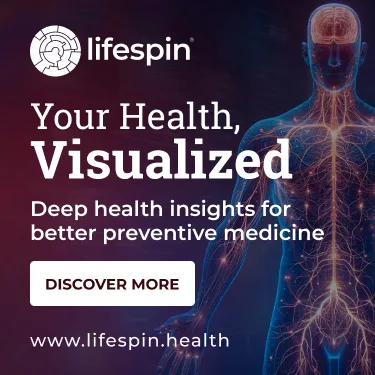An adverse drug reaction (ADR) is a noxious, unintended response to a medicine. While some are relatively minor, others can be life-altering or even fatal. They can affect any body system, and their potential impact is multi-faceted. Depending on their severity, ADRs can negatively impact on quality of life, and contribute to increased morbidity, mortality, and healthcare costs. By mimicking disease, they can also lead to unnecessary investigations, and result in delays to treatment.
Yet, many of these dire consequences are preventable. Understanding drug- and patient-related risk factors enables health professionals to better identify and prevent ADRs, thereby improving patient safety.
Preventing ADRs through careful prescribing practices, avoiding polypharmacy, monitoring and reviewing medication use regularly, and, more often in current practice, being aware of pharmacogenetic factors, remains vital in minimising harm to patients. The greatest potential for harm is in people with multimorbidity, such as multiple long-term conditions affecting different organ systems. Other factors are siloed treatment strategies, e.g. across primary and secondary care, and sometimes conflicting and interacting treatment regimes.
In those people at greatest risk, regular scrutiny of all prescribed medicines is essential to prevent ADRs and interactions. A multidisciplinary approach, spanning primary and secondary care practitioners, is key to successful, sustainable medicine optimisation. Accurate diagnosis and prompt reporting of appropriate reactions are essential steps in safeguarding public health from preventable harm.
How to identify and prevent adverse drug reactions
This case study will give you an overview of the management of depression in a patient with cardiovascular disease and how Psychotropic Drug Directory, and other products on MedicinesComplete, can be used together to improve patient safety whilst also improving efficiency.
Case Study: A patient with depression, who had been responding well to sertraline 50mg for approximately five months, was recently diagnosed with atrial fibrillation and started on apixaban. However, the patient’s concerns about her physical health led to worsening depressive symptoms, prompting the GP to increase her sertraline dosage to 100mg daily.
The patient has a history of easy bruising, which she found concerning, leading her to request a review. Her current medication regimen includes:
- Apixaban 5mg twice daily
- Bisoprolol 2.5mg daily
- Atorvastatin 10mg daily
- Sertraline 100mg daily
- Zopiclone 3.75mg at night as needed
The GP initially checks Martindale’s ADR Checker to see if apixaban could be contributing to the patient’s bruising. The search reveals that bruising is a common side effect of apixaban. The GP then follows a link to “Bruising and Bleeding” to gather further details about the mechanism and management of this adverse drug reaction (ADR).
Next, the GP uses Stockley’s Interaction Checker to input all the patient’s medications (apixaban, bisoprolol, atorvastatin, sertraline, and zopiclone). The results show a severe interaction between apixaban and sertraline, indicating an increased risk of bleeding. Although the interaction is categorized as “theoretical,” the GP seeks more detailed information by following the link to Stockley’s Drug Interactions for further clarification.
Given the patient’s symptoms of bruising, the GP consults Chapter 6 of the Psychotropic Drug Directory: Management of Side Effects. This chapter guides managing situations in which a medication is effective, but its side effects are intolerable. The GP reads that selective serotonin reuptake inhibitors (SSRIs), such as sertraline, can increase the risk of bleeding, especially within the first year of treatment. Since the patient is five months into therapy, this information is particularly relevant.
After considering the guidance, the GP decides to switch the patient’s antidepressant rather than reducing the sertraline dose. To help with this decision, the GP refers to Chapter 3 of PDD: Psychotropics in Problem Areas, which offers advice on selecting appropriate medications for patients with comorbidities, such as atrial fibrillation and cardiovascular disease.
The GP determines that mirtazapine, a lower-risk alternative, may be a suitable choice for the patient, particularly since it may address her probable sleep issues for which she currently takes zopiclone. To ensure mirtazapine will not interact with the patient’s other medications, the GP again checks Stockley’s Interactions Checker.
This case study demonstrates how MedicinesComplete can support healthcare professionals in identifying and preventing adverse drug reactions to maintain patient safety.
By using MedicinesComplete, the GP effectively manages the patient’s medication regimen, minimizes the risk of adverse drug reactions, and provides support for the patient’s treatment pathway moving forward.
MedicinesComplete
MedicinesComplete brings regularly updated medicines information, and expert guidance on the use and administration of drugs together in one place, helping health professionals to use medicines safely and avoid medication errors.
About Pharmaceutical Press
Trusted worldwide for providing evidence-based pharmaceutical knowledge to improve patient safety, we support health professionals to quickly and confidently make the most informed decisions on the safe and effective use of medicines.
Also Read : Pharmaceutical Press Shares Essential Knowledge To Reduce Medication Errors
Their essential knowledge products are referred to daily by health professionals globally, across healthcare, academic and research settings and relied on by many commercial organisations to operate their businesses.
As the Royal Pharmaceutical Society’s Knowledge Business, the organization invest its resources into creating world-class tools that promote best practices in medicine use, which means health professionals can quickly and confidently make the most informed decisions.
For more information about Pharmaceutical Press go to PharmaceuticalPress.com



















